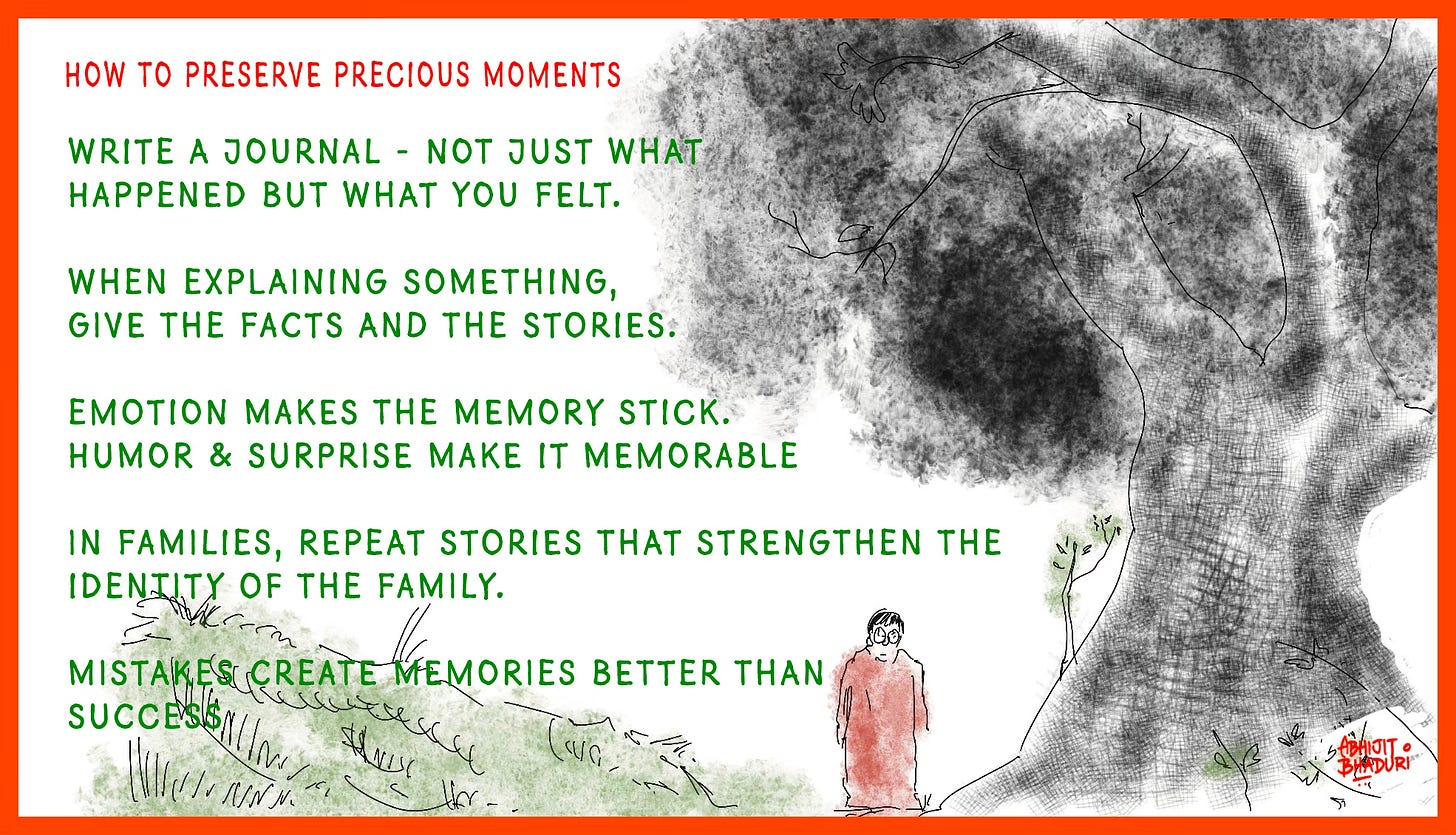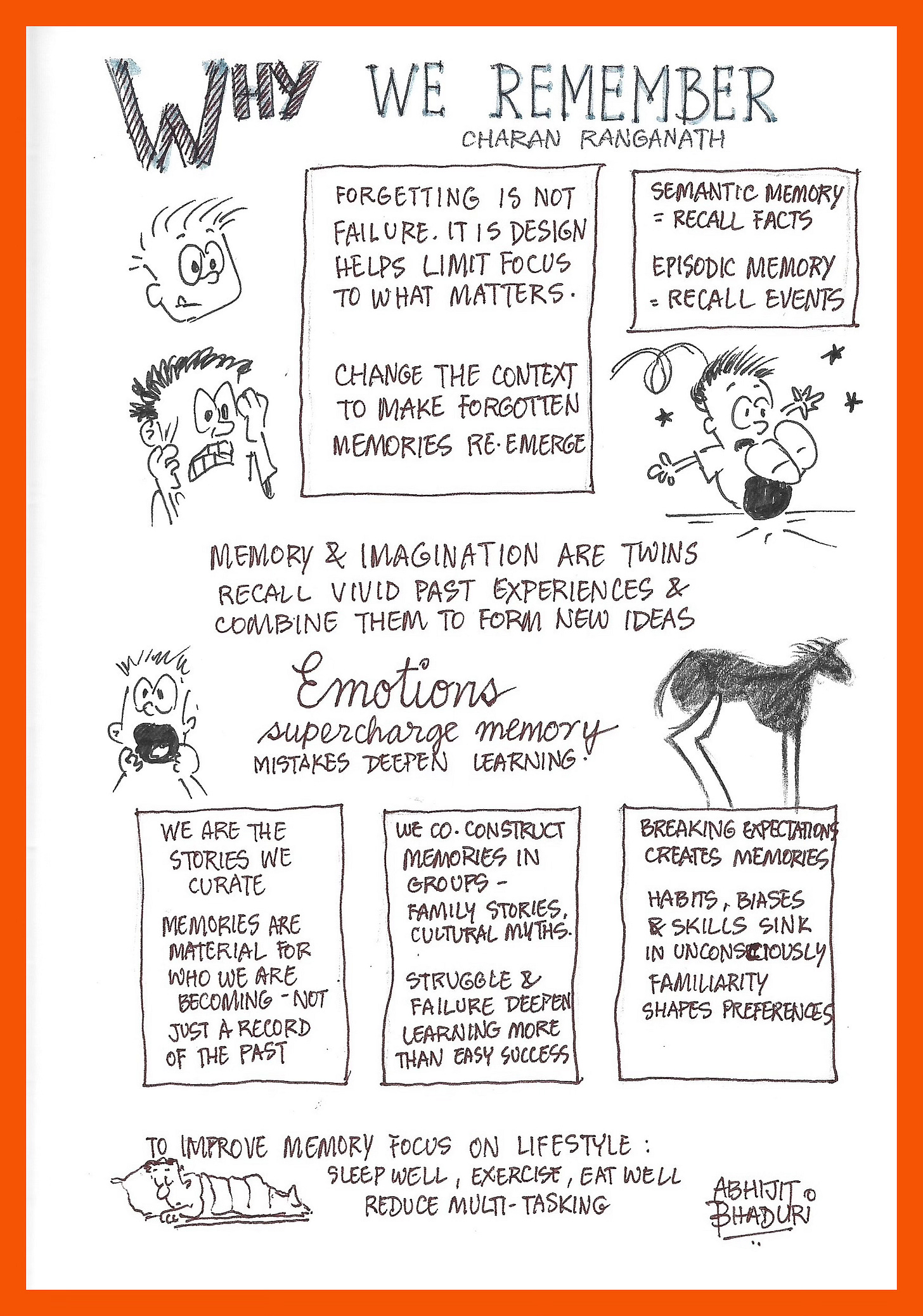Why We Remember
I believed that memory is like a giant archive of my life, moment by moment. I was wrong. The book "Why We Remember" by Dr Charan Ranganath was an eye opener. Forgetting is a feature, not a bug.
Charan Ranganath's Why We Remember dismantles our most cherished misconceptions about how the mind works, replacing the tired metaphor of memory-as-filing-cabinet with something far more nuanced and beautiful: memory as an artist's canvas.
Ranganath, a neuroscientist at UC Davis, offers something richer—a fundamental reframing of what memory is and why it matters. His central thesis is elegantly simple yet profound: memory isn't a passive recording device but an active, creative process that shapes both our past and our future.
Memory isn't a passive recording device but an active, creative process that shapes both our past and our future.
The Art of Remembering
The book's most compelling insight lies in its distinction between two types of memory that most readers have never considered.
Semantic Memory: Semantic memory stores our knowledge—facts, concepts, the scaffolding of what we know about the world.
Episodic Memory: This episodic memory, is our personal time machine, allowing us to relive experiences with startling vividness.
You know Paris is France's capital (semantic), but you can feel the cobblestones under your feet during that midnight walk along the Seine (episodic).
This dual-library metaphor illuminates why some people excel at trivia but struggle to tell compelling stories. Ranganath shows how these systems work together to create not just what we know, but who we are.
Memory as Fortune Teller
Perhaps the book's most fascinating revelation is how memory serves the future more than the past. Remembering and imagining activate nearly identical brain networks. When we daydream about vacation plans, our minds are essentially remixing fragments of past experiences into new scenarios. This explains why people with severe amnesia can't envision tomorrow—without a repository of personal experiences to draw from, the future becomes unimaginable.
If memory is fundamentally about preparation rather than preservation, then forgetting isn't a bug in the system—it's a feature. Our brains actively discard irrelevant details to better navigate future challenges.
The Emotional Varnish
Ranganath excels at explaining why some memories stick while others fade. Emotion, he argues, acts like varnish on a painting, preserving certain experiences while others blur into indistinction. This isn't just poetic language—it's grounded in solid neuroscience about how stress hormones and attention networks collaborate to etch significant moments into long-term storage.
The book shines when connecting these insights to real-world applications. Parents learn why bedtime stories matter more than flashcards. Teachers discover why struggle strengthens memory better than easy success. Leaders understand how shared narratives shape organizational culture.
A New Lens on an Ancient Mystery
Why We Remember succeeds brilliantly at its primary mission: helping readers understand one of the most fundamental aspects of human experience. Ranganath writes with the clarity of someone who genuinely understands his subject and the wisdom to know that the most important insights are often the simplest ones.
The book's lasting contribution may be its reframing of memory as fundamentally creative rather than reproductive. We are not passive observers of our own experiences but active authors, constantly revising and reimagining our personal narratives. Every act of remembering is also an act of creation.
For anyone curious about the intersection of neuroscience and daily life, Why We Remember offers a fresh perspective on an ancient mystery. It won't teach you party tricks for memorizing phone numbers, but it might change how you think about the stories you tell—and retell—about yourself.






